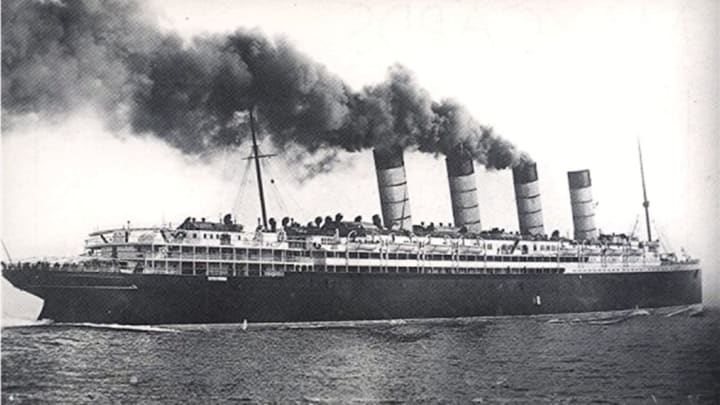On May 7, 1915, the ocean liner RMS Lusitania was attacked by a German submarine on its way to Liverpool, UK from New York. The ship’s sinking and the 1198 deaths that resulted from it marked a pivotal moment in World War I. More than 100 years later, divers are still recovering artifacts from the wreckage.
As Atlas Obscura reports, the latest piece of the vessel to be brought to the surface is the telegraph used to send orders to the engine room. The first attempt to raise the object took place in July 2016 without an archaeologist present. Following a technical issue, the mission failed, and the telegraph sank back to the seabed off Ireland’s southern coast. This time around, an archaeologist from Ireland’s National Monuments Service supervised as divers recovered the item.
This is the second Lusitania telegraph to be brought ashore within the past year (the first was retrieved in October 2016). According to Ireland's Minister for Culture and Heritage Heather Humphreys, the artifact has fared well after a century on the seabed. "I am happy to confirm that this important piece of the Lusitania has now been recovered from the wreck off the west Cork coast. I understand that the telegraph is undamaged and in excellent condition," she said in a statement.

The wreck of the Lusitania was discovered in 1935, but recent salvaging efforts have been complicated by conflicts between American venture capitalist Gregg Bemis, who bought the wreck in 1982, and the Irish government. Bemis suspects the ship was delivering secret explosives from the U.S. to Britain when it was struck by a German torpedo and that's what led to its fiery demise. But to further investigate the theory he would need permission from the Irish government to cut open the ship's remains—something it has refused to grant thus far.
The newly recovered telegraph doesn't help solve the mystery, but it is an exciting find for archaeology buffs. Bemis plans to donate the telegraph along with other Lusitania artifacts to a local Irish museum.
[h/t Atlas Obscura]
